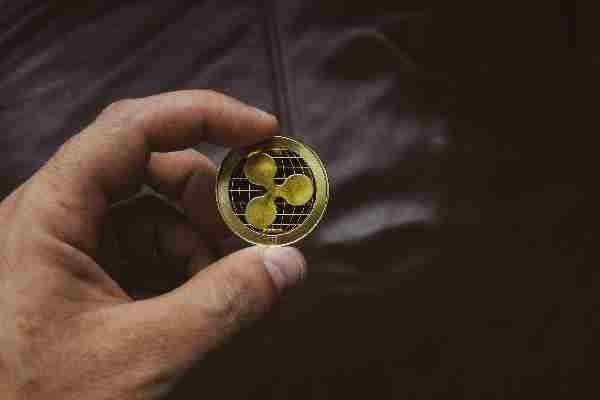Established in 2012 by Chris Larsen and Jeb McCaleb, Ripple is a virtual payment system for financial transactions, and a cryptocurrency network, with its crypto token being known as the XRP.
As indicated by the organization, Ripple runs on an open-source, P2P (distributed) decentralized blockchain network, and it is intended to offer solutions that the crypto networks that preceded it neglected to convey.
According to the market cap, XRP has stayed among the best 10 cryptocurrencies all over the planet starting around 2017.
There have been discussions and controversies encompassing Ripple throughout recent years. Ripple expresses that the XRP ledger is completely decentralized-as Ripple CTO David Schwartz put it, “… by plan, the XRP Ledger is likewise — while perhaps not more so — decentralized than both Bitcoin and Ethereum.”
Notwithstanding, it has been addressed consistently on the off chance that Ripple really is just about as decentralized as it professes to be.
To understand regardless of whether Ripple truly is decentralized, we should first investigate how the system functions.
Understanding Ripple:
Contents
Crypto monsters like Bitcoin or Ethereum use proof-of-work algorithms to maintain decentralization, a training that has forever been commended for making the crypto networks genuinely decentralized by giving people on the blockchain (known as miners) the ability to mine coins and get compensated once they prevail with regards to adding blocks to the chains.
With time, it has become certain that the PoW system can become centralized as well, where just a small bunch of miners could hold onto the ability to control the network. Ripple has referred to this as the main reason: it did not decide to walk that street.
What Ripple has done rather is convey a consensus algorithm for guaranteed decentralization of the platform. The agreement convention lets various users, known as validators, verify, record, and approve transactions and account balances.
For all transactions happening on the Ripple blockchain, history and significant data are recorded and transferred on the blockchain so that everybody might see them.
Moreover, since the data is not connected to any single account or institution, the power gets circulated as opposed to being bound to just a small group of people.
Besides, the protocol builds the fidelity of the system by ending twofold spending (the gamble of a holder copying a digital token and involving the duplicate for a transaction rather than the original).
Regardless of whether a node on the network attempts to send an indistinguishable amount of money through numerous excursions, the system would keep just the first and have all the others erased.
A poll is conducted to conclude which transaction was made first and the one most nodes vote in favor of is kept.
So what can be learned from all that will be that no centralized power figure or institution controls the operations of the system, and in this manner Ripple claims to be decentralized?
Besides this Ripple likewise gloats about sped-up transactions and lower transaction fees, which demonstrates it is a more qualified payment system for little, everyday transactions when compared with its contemporaries.
Since the XRP ledger can process transactions without the requirement for miners, it saves a great deal of time and computing power, hence bringing down transaction costs and permitting a fast finish of transactions.
The consensus protocol also comes with a system called fee escalation which helps it with holding the fees in check.
Is Ripple Truly Decentralized, though?
There have been innumerable arguments encompassing Ripple’s decentralization since its origin.
Experts have brought countless allegations that even the organization wanted to demonstrate and legitimize itself across its different social accounts and online blogs.
It’s just normal for one to be considering what the premise of these allegations is.
Ripple Created XRP and Owns Most of the XRP Supply:
XRP was made by ‘Newcoin’ back in 2012, a partnership that changed its name to ‘OpenCoin’ after a month. In 2013, the organization then, at that point, continued to rename itself once more and move to California, and this time it was called ‘Ripple Labs’.
At long last in 2014, the organization combined efforts with an enterprise in Delaware likewise named Ripple Labs, and that is exactly the same Ripple we know today.
In 2013, around a half year after the network started its excursion, a trademark was recorded by OpenCoin.
Nonetheless, Ripple owns the trademark today, and as the actual organization claims, it did, as a matter of fact, make XRP. The organization and its accomplices likewise hold and control most of the XRP supply.
Ripple Controls the Consensus System:
The consensus protocol deals with the basis of trust, as every node on the XRP ledger needs to put its faith in a specific number of validators on the network.
Out of each and every group of 1,000 or so nodes, 33 validators are chosen who finish transactions, and these 33 validators make up a rundown called the UNL or the Exceptional Node Rundown that is delivered to each node so they can pick which validator to trust.

What Ripple does is issue a recommended UNL list, and keeping in mind that evidently, the nodes can decide to disregard Ripple’s rundown, to date there have been just not very many validators who have figured out how to procure that spot in spite of not being picked by Ripple.
Unlike Other Cryptocurrencies, Ripple Can Print More XRP:
The Ripple ledger began with 100 billion XRPs, but there’s no finite supply of XRP, so hypothetically Ripple can print more tokens by making a code change in the software.
And while this makes Ripple a trusted and steady system for all payments and money exchanges, it does make you question how decentralized it really is if its circulating supply can be changed by the company.
It’s undeniable that Ripple’s virtual payment protocol is useful and allows easy, comfortable, and secure transactions. But with all the evidence out there that provides solid proof of Ripple being a centralized network, after all, the constant claims Ripple makes of being decentralized are potentially misleading, to say the least. Will they ultimately bring forth its downfall or continue to elevate its market status, remains to be seen.
We hope this guide helps you in learning whether Ripple is decentralized or not.


Reviews